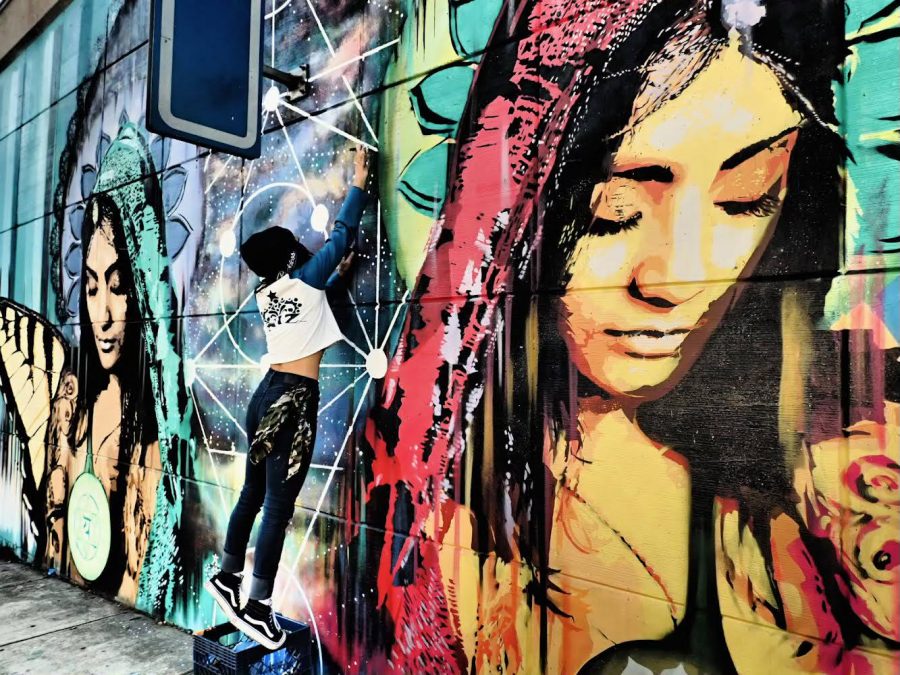Muralists talk stories behind art, pressure to always work
October 6, 2021
Editor’s Note: This article first appeared as part of the September 17 flipbook.
Surrounded by cans of spray paint, J Muzacz put the finishing touches on his newest mural promoting fair trade on the walls of the Wheatsville Co-op on Guadalupe Street.
“It’s a unique spot (muralists) find ourselves in,” Muzacz said. “(We) have the ability to take that power back and put something more meaningful in a public space.”
Muzacz’s piece stands among the many works of art that line Austin streets and address issues such as mental health and sustainability through symbolism and color.
“Being an artist affords you a lot of freedom that other people don’t have,” local artist Niz said. “The freedom to express ideas, make your own schedule, do what you love for a living (and) to make people happy.”
In October 2020, a community arts panel chose six Austin artists to work on a new mural under the Lamar Underpass, organized by non-profit Raasin in the Sun, who use art to harvest resilience. The panel selected Niz, Samara Barks and four other local artists to complete the “Be Well” mural, dedicated to presenting Austinites with positive messages about mental health during the pandemic.
“A lot of people were very isolated,” Niz said. “That might’ve been one inspirational thing that they would have an opportunity to look at while they’re on the way to the grocery store or work.”
Each artist painted their own section of the roughly 10,000 square foot area. Niz painted a mirror image of a woman with butterfly wings along with the words “Reconnect Yourself.”
“When people have a really hard time and they talk about it. … (They say) there’s this little flame or a little inner voice or little spark,” Niz said. “I think everybody has it internally … and sometimes it seems really small, but it’s always there.”
Barks painted “Rest is Necessary” in huge yellow letters along with people sleeping, which drew inspiration from The Nap Ministry’s concept of rest as resistance to a capitalistic society full of racial injustice.
“My message to Black Austin was to rest throughout all the marches and police brutality and the things that were going on last summer,” Barks said. “It’s not just rest to keep going. It’s to rest as a form of resistance against how our society currently runs and operates.”
Barks said The Nap Ministry’s message resonated with her, so she decided to take September off after months of overworking.
“I’ll probably make that a regular practice and increase that time over the years because as we get older, when do we enjoy life? When do we rest?” Barks said. “Why do we have to wait until we’re (75) to do that? … I don’t want to wait until (I’m) 75 to enjoy my life.”
While Barks can afford to take a sabbatical, she said she knows not everyone can take time off to rejuvenate themselves.
“The whole message of rest as a form of resistance is that it shouldn’t be a privilege or a luxury,” Barks said. “But that’s the way a lot of us are programmed to think, that we always have to be going, working, looking for the next grind and we’re not realizing that we’re slowly willing ourselves down.”












